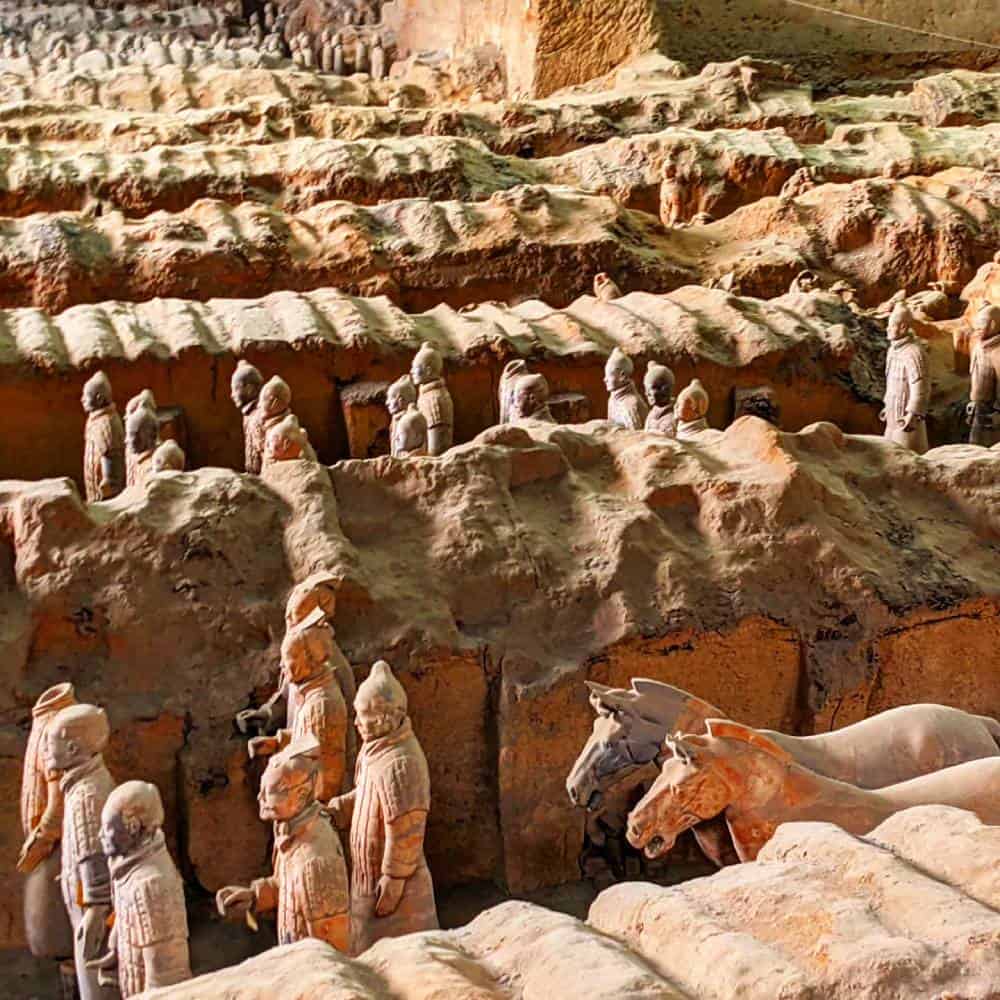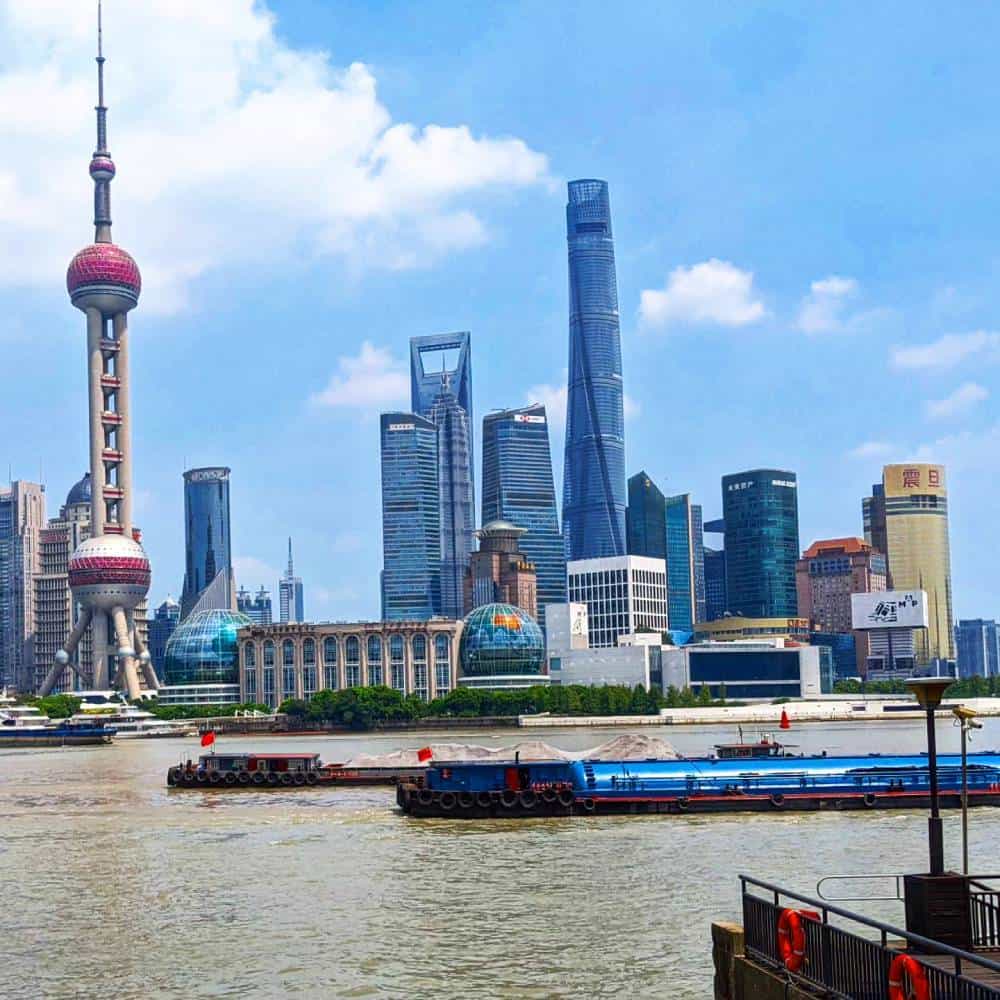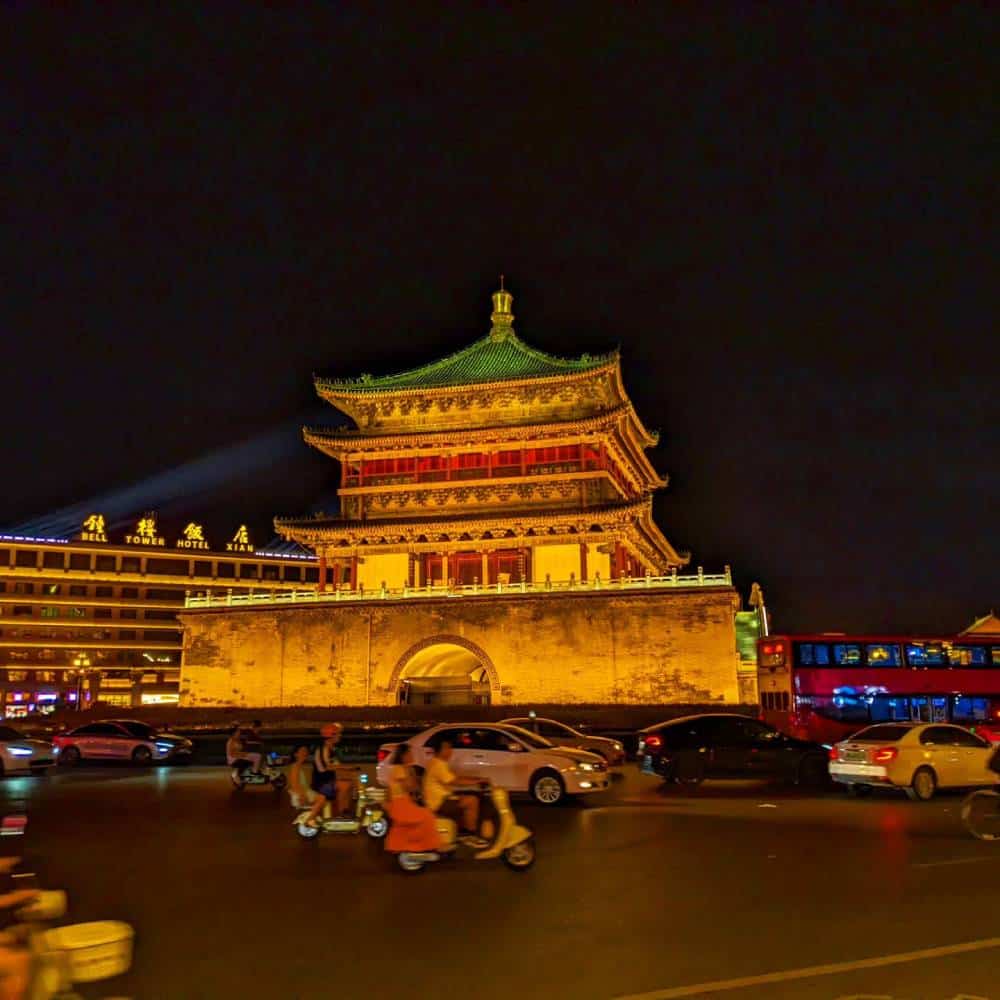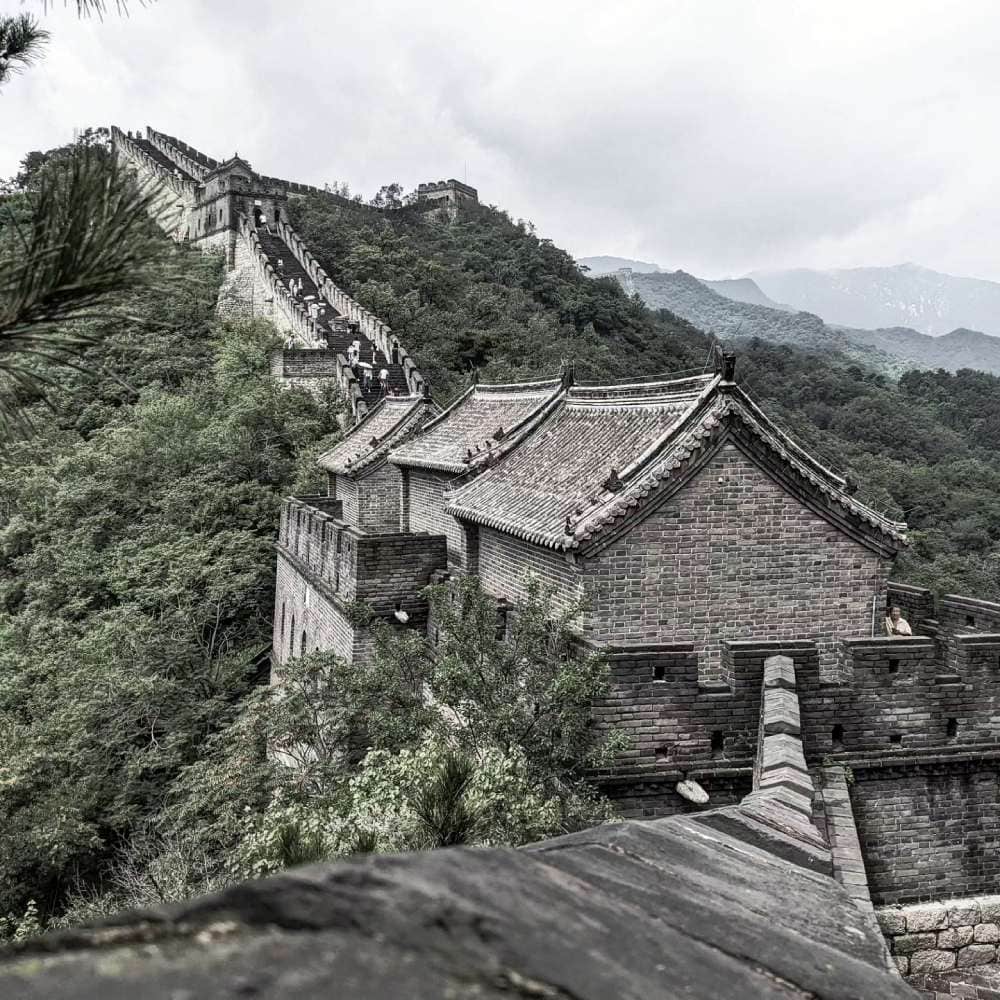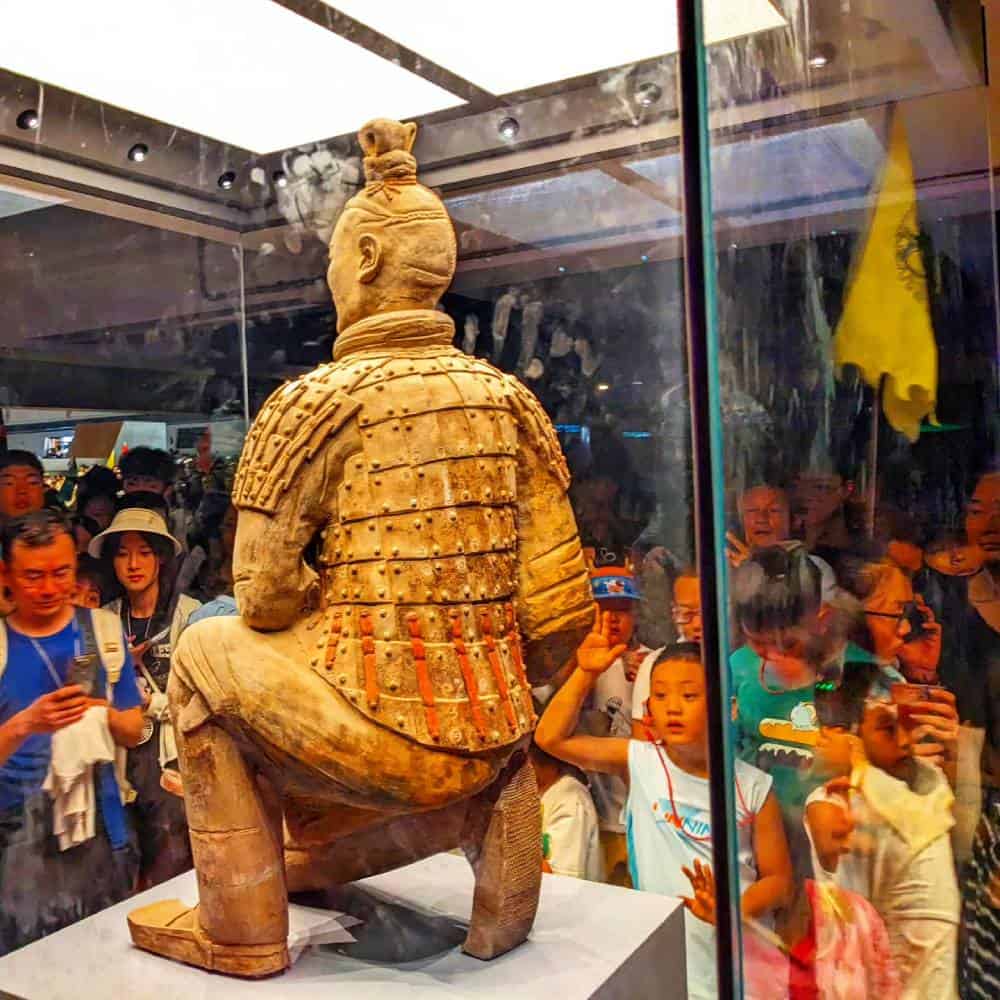
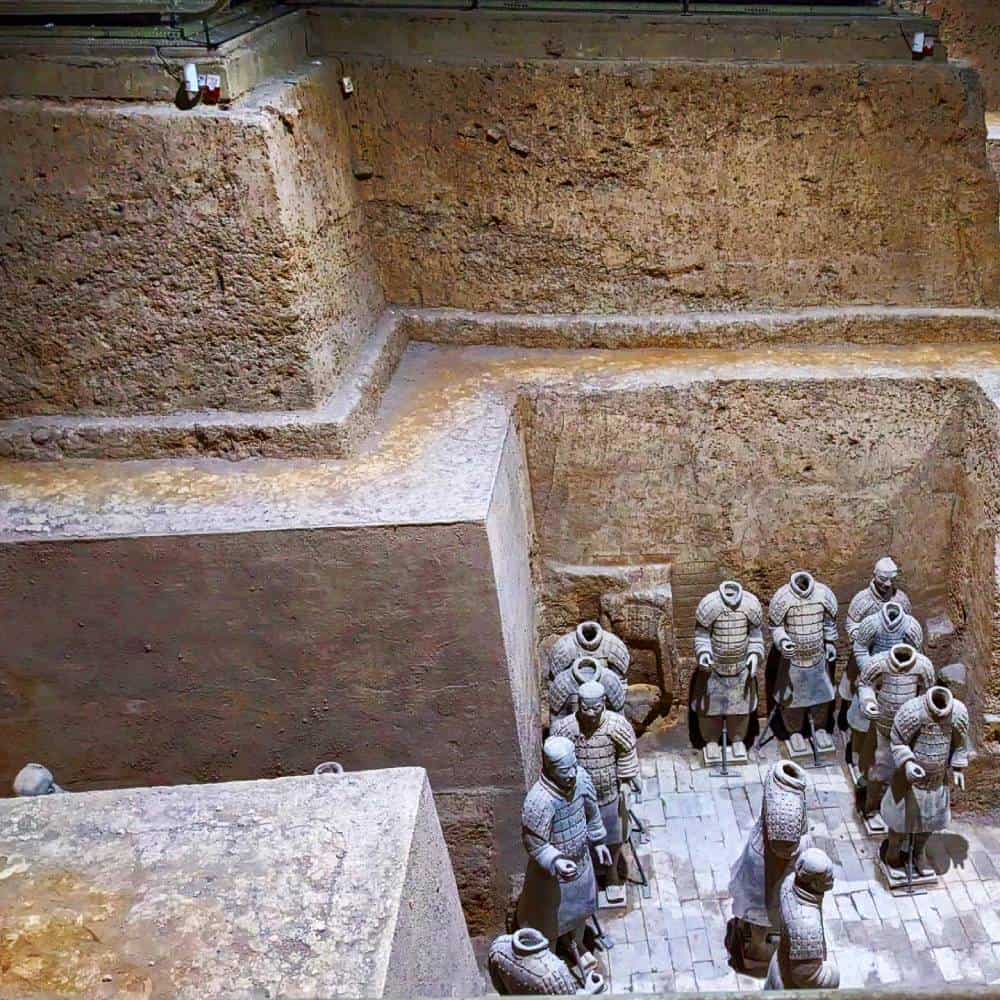
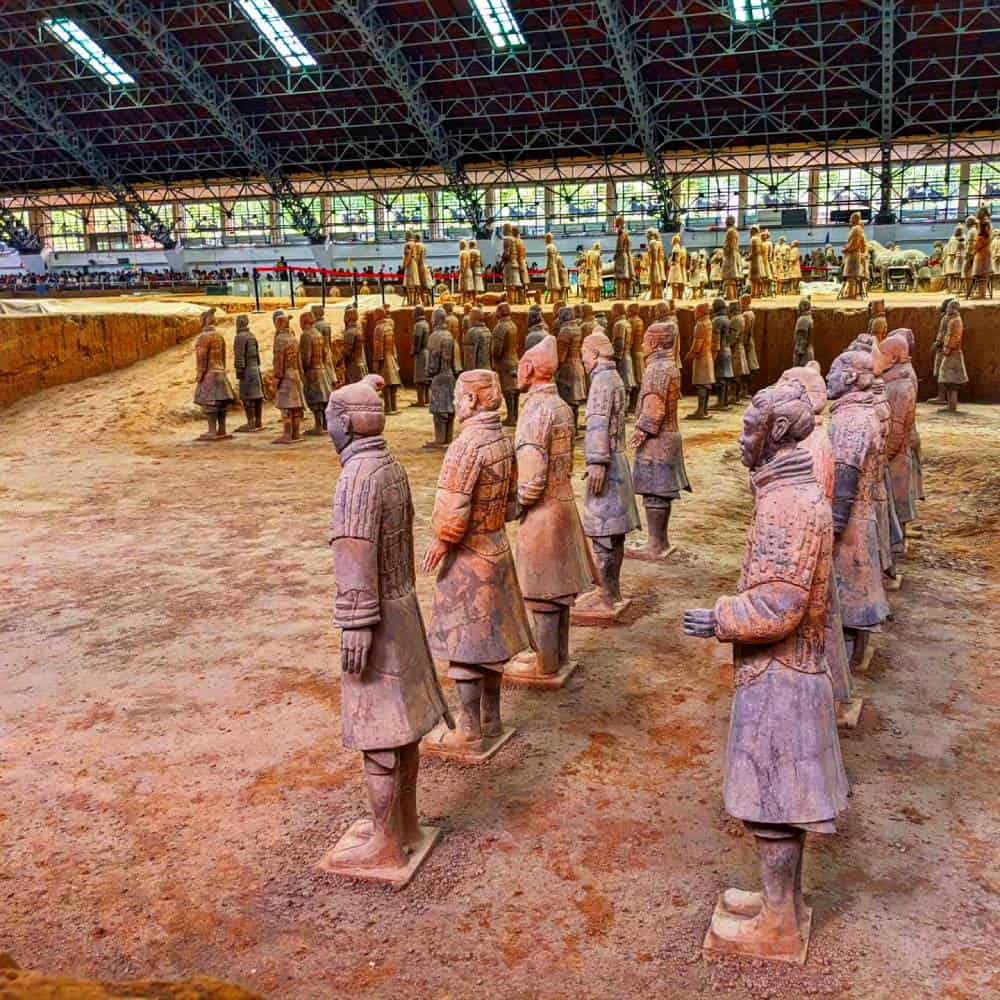
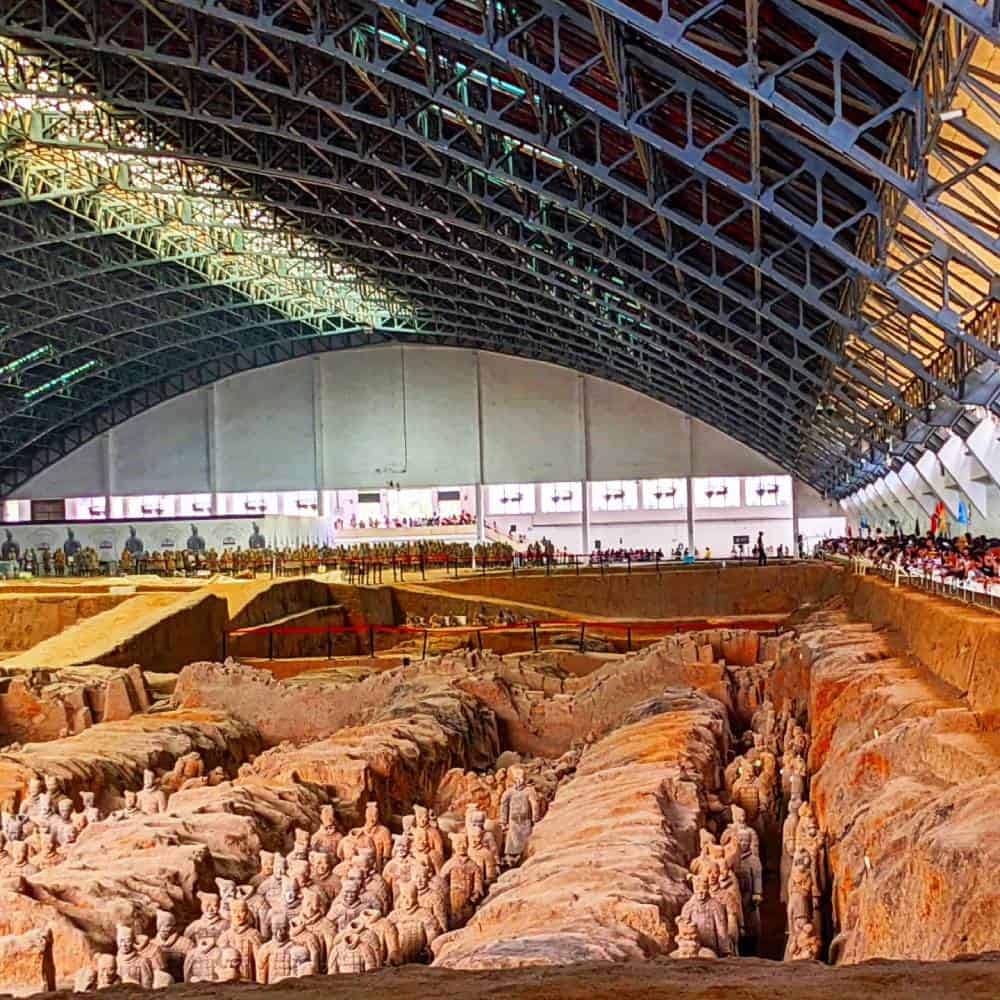
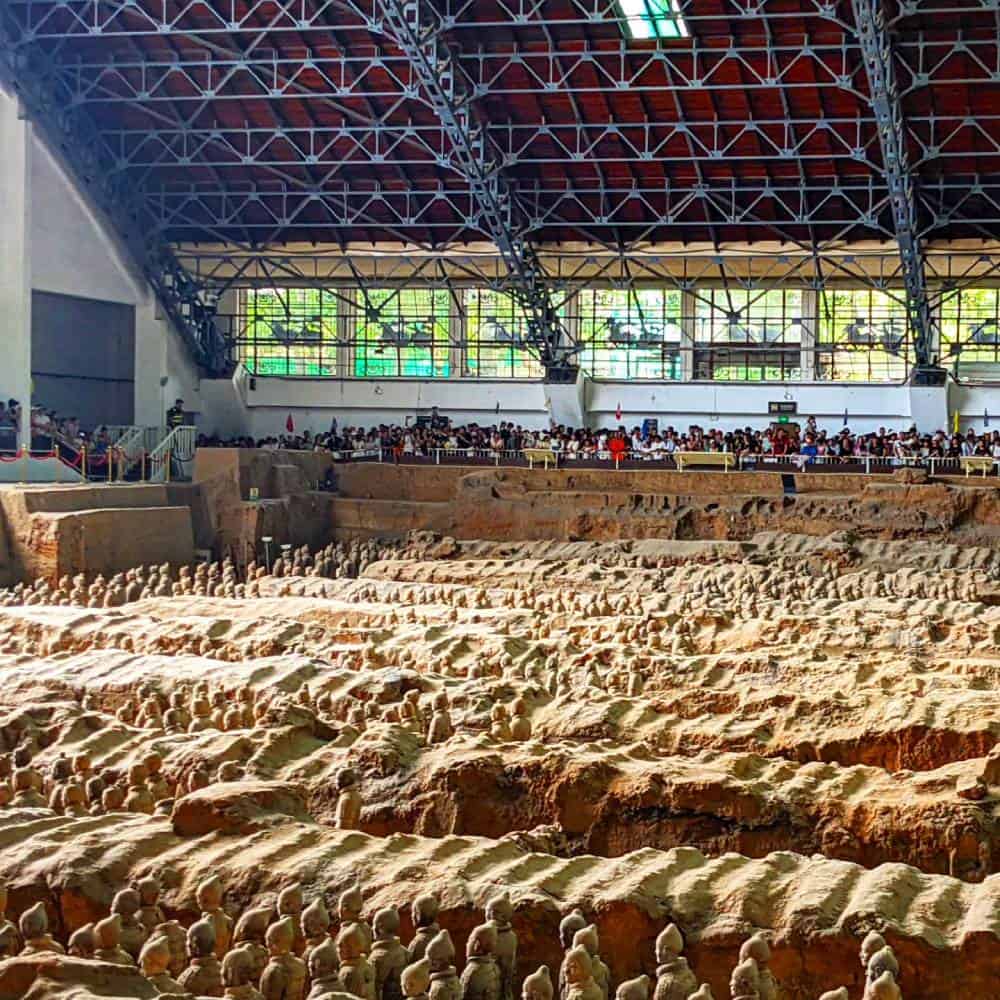
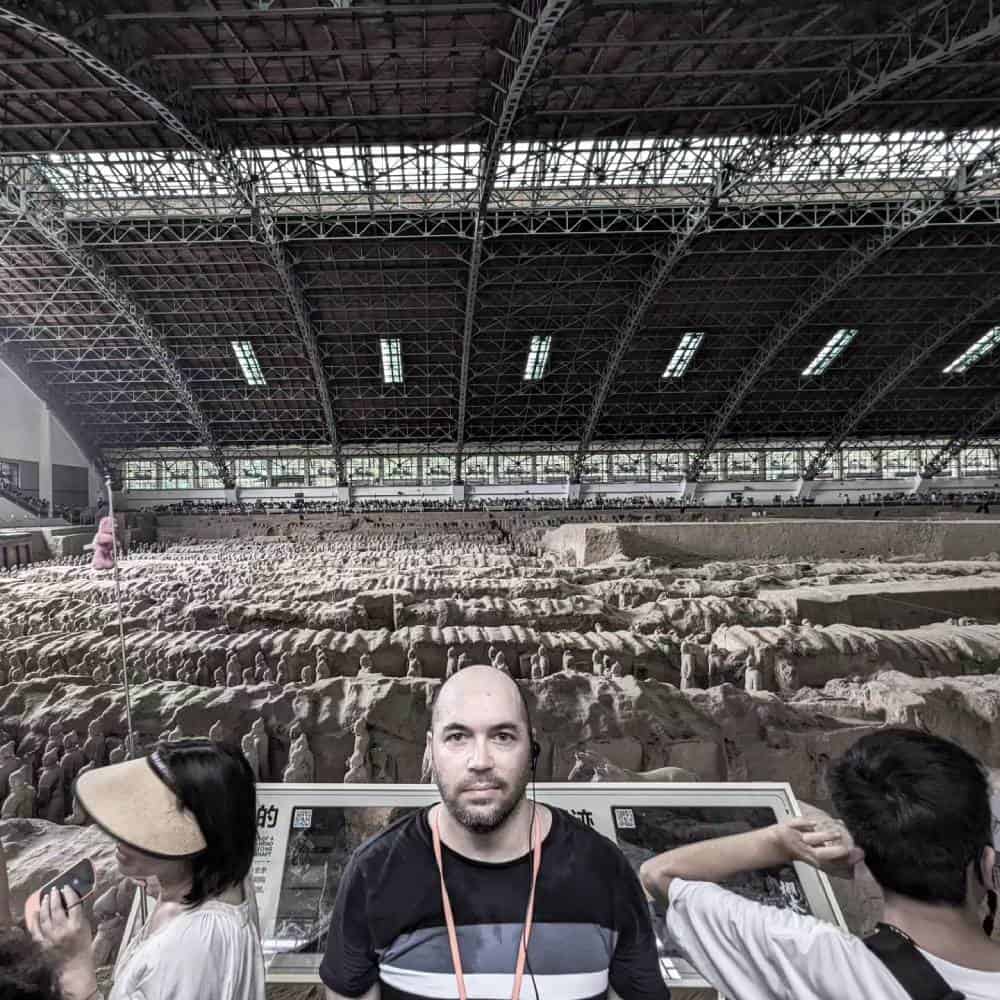
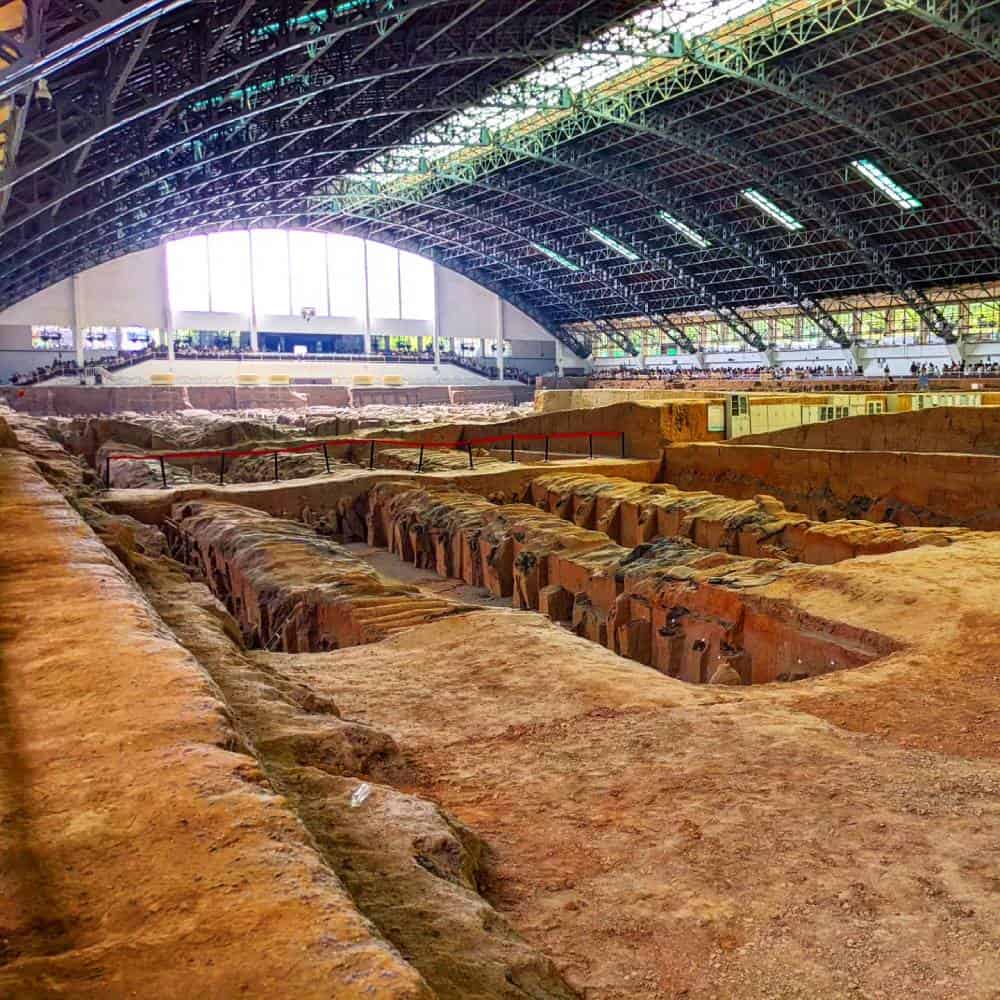
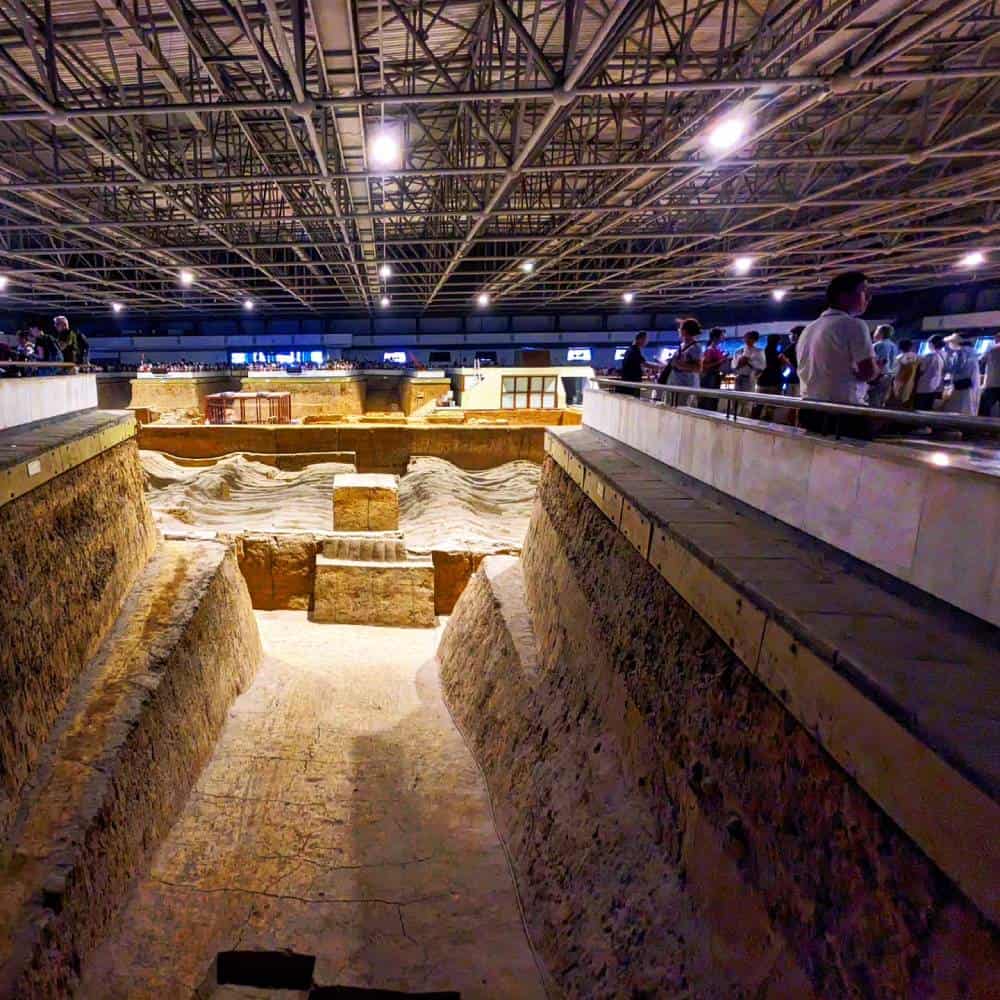
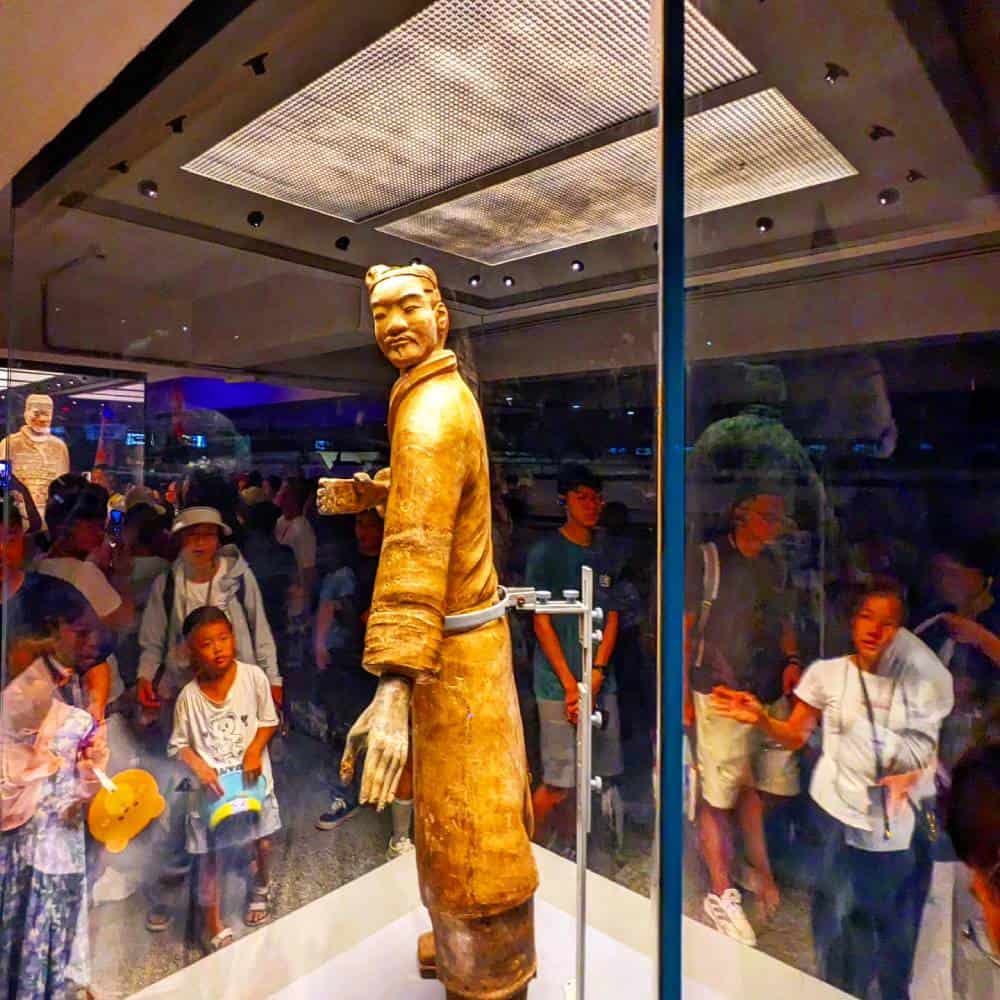
The Terracotta Warriors: An Unforgettable Journey into Ancient China
Nestled in the historic city of Xi’an, China, the Terracotta Warriors stand as one of the most extraordinary archaeological discoveries of the 20th century. These life-sized statues were created over two millennia ago to protect the tomb of China’s first emperor, Qin Shi Huang, in the afterlife. Today, the Terracotta Army draws millions of visitors from around the world, eager to witness this incredible monument to China’s rich history and cultural heritage.
In this guide, we’ll take you on a journey through the fascinating world of the Terracotta Warriors, explore day tour options from Xi’an, and highlight other fun activities you can enjoy in this ancient city. Whether you’re a history buff, an adventurer, or simply curious about Chinese culture, Xi’an offers a wealth of experiences that are sure to leave you spellbound.
The History of the Terracotta Warriors
The story of the Terracotta Warriors begins in 221 BCE, when Qin Shi Huang, the first emperor of China, unified the warring states and established the Qin Dynasty. To secure his power and ensure his rule extended beyond death, Emperor Qin commissioned an elaborate mausoleum that would include an army of life-sized warriors, horses, chariots, and other figures made from terracotta clay. These figures were buried alongside the emperor to protect him in the afterlife.
Construction of the mausoleum began shortly after Qin Shi Huang ascended to the throne and took nearly 40 years to complete, involving over 700,000 laborers. The Terracotta Army itself, buried in three large pits near the emperor’s tomb, was designed to be a replica of the imperial guard, complete with infantry, cavalry, archers, and charioteers. Each warrior was meticulously crafted with individual facial features, armor, and weapons, reflecting the skill and artistry of ancient Chinese craftsmen.
For over 2,000 years, the Terracotta Army lay hidden beneath the earth, forgotten by history until its accidental discovery in 1974 by local farmers digging a well. This remarkable find quickly captured the attention of archaeologists and historians worldwide, leading to extensive excavations and the establishment of the Terracotta Warriors as one of the greatest archaeological treasures of all time.
Exploring the Terracotta Army: What to See
A visit to the Terracotta Warriors is a journey into the heart of ancient China. The site is located about 25 miles (40 kilometers) east of Xi’an, and is part of the larger Mausoleum of the First Qin Emperor, a UNESCO World Heritage site.
The Museum of the Terracotta Army: The Terracotta Warriors are housed in a massive museum complex that includes three main excavation pits, as well as an exhibition hall displaying artifacts from the tomb complex. As you enter the museum, you’ll be greeted by a large map of the site, which provides an overview of the layout and history of the Terracotta Army.
Pit 1: The largest and most impressive of the three pits, Pit 1 is where you’ll find the majority of the Terracotta Warriors. The pit is an enormous rectangular chamber that measures about 230 feet long and 60 feet wide. It contains over 6,000 life-sized warriors arranged in battle formation, with infantry and chariots at the front, followed by archers and cavalry. The sheer scale and detail of the warriors are awe-inspiring, making Pit 1 the highlight of any visit to the museum.
Pit 2: Located just north of Pit 1, Pit 2 is smaller but equally fascinating. This pit contains a mix of infantry, cavalry, archers, and chariots, arranged in a more complex formation. Pit 2 is particularly notable for the diversity of the figures, with many different types of warriors represented. Here, you can see kneeling archers, standing archers, and cavalry horses in remarkable detail.
Pit 3: The smallest of the three pits, Pit 3 is believed to have served as the command center for the Terracotta Army. It contains a small number of warriors and chariots, along with a ceremonial altar. The figures in Pit 3 are arranged in a square formation, suggesting that it was used for religious or ceremonial purposes. Despite its smaller size, Pit 3 offers valuable insights into the organization and structure of the Terracotta Army.
Exhibition Hall: After exploring the excavation pits, head to the Exhibition Hall, where you can see a variety of artifacts unearthed from the tomb complex. The exhibits include bronze chariots and horses, weapons, pottery, and other items that shed light on the burial customs and military practices of the Qin Dynasty. One of the most striking displays is the bronze chariot, a life-sized model that showcases the advanced metalworking skills of ancient Chinese artisans.
Day Tour Options to the Terracotta Warriors
Visiting the Terracotta Warriors is a must-do on any trip to Xi’an, and there are plenty of day tour options available to help you make the most of your experience. Whether you prefer a guided tour, a private excursion, or a more immersive adventure, there’s a tour to suit every traveler’s needs.
Guided Group Tours
Group tours are a popular and affordable way to visit the Terracotta Warriors. These tours typically include transportation from Xi’an, a professional English-speaking guide, and entrance fees to the museum. Group sizes can vary, but they’re generally kept small to ensure a more personalized experience.
What to Expect: A typical group tour starts with a morning pickup from your hotel in Xi’an, followed by a comfortable drive to the museum. Upon arrival, your guide will lead you through the excavation pits, providing detailed explanations of the history and significance of the Terracotta Army. You’ll also have some free time to explore the museum on your own and take photos.
Many group tours also include a visit to other nearby attractions, such as the Huaqing Hot Springs, the Banpo Neolithic Village, or the Tomb of Emperor Jingdi (Hanyangling). These additional stops provide a broader understanding of Xi’an’s rich cultural heritage and history.
Pros: Group tours are a great way to meet other travelers and learn from a knowledgeable guide. They’re also budget-friendly and convenient, with transportation and entrance fees included.
Cons: Group tours can sometimes feel rushed, especially if you’re interested in spending more time at the museum. Additionally, you may have less flexibility in terms of the itinerary and pace of the tour.
Private Tours
For a more personalized experience, consider booking a private tour to the Terracotta Warriors. Private tours offer greater flexibility, allowing you to customize the itinerary to suit your interests and preferences. You’ll have your own dedicated guide and driver, ensuring a more intimate and immersive experience.
What to Expect: A private tour typically begins with a pickup from your hotel in Xi’an at a time of your choosing. Your guide will tailor the tour to your interests, whether you want to focus on the history of the Terracotta Army, explore lesser-known aspects of the museum, or visit additional sites in the area.
One of the key advantages of a private tour is the ability to set your own pace. You can spend as much time as you like at each pit, ask questions, and delve deeper into the details of the Terracotta Warriors. Your guide can also recommend the best spots for photos and help you avoid the crowds.
Some private tours include unique experiences, such as a visit to a local pottery workshop where you can try your hand at making your own terracotta figurine. Others offer the option to combine the Terracotta Warriors with a visit to the ancient city wall of Xi’an, the Big Wild Goose Pagoda, or the Muslim Quarter.
Pros: Private tours offer a more personalized and flexible experience, allowing you to explore at your own pace and focus on your specific interests.
Cons: Private tours are typically more expensive than group tours, but they offer a higher level of service and customization.
Adventure Tours
For travelers seeking a more active and adventurous experience, there are several tours that combine a visit to the Terracotta Warriors with outdoor activities such as hiking, cycling, or hot air ballooning.
What to Expect: One popular option is a cycling tour that takes you from Xi’an to the Terracotta Warriors along scenic countryside routes. You’ll ride through charming villages, past ancient temples, and along the city’s historic walls before arriving at the museum. This is a great way to see a different side of Xi’an and enjoy the beautiful rural landscapes.
Another exciting option is a hot air balloon tour, which offers a bird’s-eye view of the Terracotta Warriors and the surrounding countryside. After exploring the museum on foot, you’ll take to the skies for a breathtaking flight over the ancient tomb complex and the majestic Qinling Mountains.
For those who enjoy hiking, consider a tour that includes a trek up Mount Li, located near the museum. This hike offers stunning views of the surrounding area and a chance to visit the Huaqing Hot Springs, a historic site known for its beautiful gardens and imperial bathhouses.
Pros: Adventure tours offer a unique and memorable way to experience the Terracotta Warriors, combining cultural exploration with outdoor activities.
Cons: These tours require a higher level of physical fitness and may not be suitable for all travelers. They can also be more expensive than standard tours.
Other Fun Things to Do in Xi’an
While the Terracotta Warriors are the main draw, Xi’an is a city with a rich history and plenty of other attractions to explore. Here are some fun things to do during your stay in Xi’an:
Explore the Ancient City Wall
Xi’an’s ancient city wall is one of the best-preserved city walls in China and a must-see attraction. Built during the Ming Dynasty, the wall encircles the old city and offers stunning views of Xi’an’s historic and modern landscapes.
What to Do: You can walk or rent a bike to explore the 8.5-mile (14-kilometer) circuit of the wall, stopping at various watchtowers and gates along the way. The South Gate is the most popular starting point, and from here, you can enjoy a leisurely ride or walk while taking in the panoramic views.
For a unique experience, visit the city wall at night when it’s beautifully illuminated by lanterns and lights. Many tours offer a night-time bike ride along the wall, which is a magical way to see the city.
Visit the Muslim Quarter
Xi’an’s Muslim Quarter is a vibrant and bustling area known for its rich cultural heritage and delicious street food. The quarter is home to the Hui people, an ethnic minority group in China who practice Islam.
What to Do: Wander through the narrow streets and alleyways of the Muslim Quarter, where you’ll find a mix of traditional architecture, lively markets, and food stalls selling a variety of local delicacies. Be sure to try the famous lamb skewers, roujiamo (Chinese-style burgers), and yangrou paomo (lamb soup with bread).
The Great Mosque of Xi’an, one of the oldest and most important mosques in China, is also located in the Muslim Quarter. The mosque features a unique blend of Chinese and Islamic architectural styles and is a peaceful oasis amid the bustling streets.
Discover the Big Wild Goose Pagoda
The Big Wild Goose Pagoda is one of Xi’an’s most iconic landmarks and a symbol of the city’s rich Buddhist heritage. The pagoda was built in 652 CE during the Tang Dynasty to house Buddhist scriptures brought to China from India by the monk Xuanzang.
What to Do: Visit the pagoda and the surrounding Da Ci’en Temple complex, where you can explore the beautiful gardens, courtyards, and halls. Climb to the top of the pagoda for panoramic views of the city and the nearby Giant Wild Goose Pagoda Square, where you can watch the nightly musical fountain show.
Experience Traditional Chinese Culture
Xi’an is a great place to immerse yourself in traditional Chinese culture, with opportunities to experience ancient art forms, music, and performances.
What to Do: Attend a Tang Dynasty Music and Dance Show, which features traditional Chinese music, dance, and costumes from the Tang Dynasty. These shows are held at several venues in Xi’an and provide a fascinating glimpse into the cultural history of the city.
For a more hands-on experience, consider joining a calligraphy or painting class, where you can learn the ancient art of Chinese brushwork from a local master.
Conclusion: Xi’an and the Terracotta Warriors – A Journey Through Time
A visit to Xi’an and the Terracotta Warriors is like stepping back in time to the days of China’s first emperor and the glory of the Qin Dynasty. Whether you’re marveling at the thousands of life-sized warriors in the museum, exploring the ancient city wall, or savoring the flavors of the Muslim Quarter, Xi’an offers an unforgettable experience that will leave you with a deeper appreciation for China’s rich history and culture.
With a wide range of day tour options, from guided group tours to private excursions and adventure experiences, there’s no shortage of ways to explore the wonders of Xi’an. So pack your bags, bring your curiosity, and get ready to embark on a journey through time in one of China’s most historic and fascinating cities.

